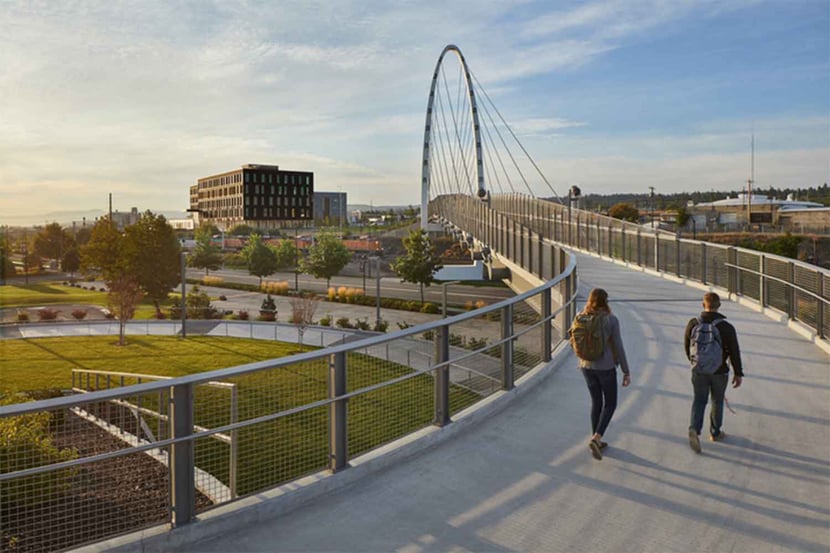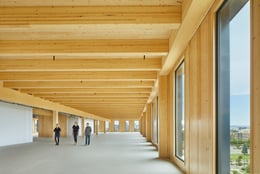Login
Registered users

Located in the South Landing eco-district in Spokane (USA), Catalyst and the adjacent Scott Morris Center for Energy Innovation demonstrate a new architectural approach based on modern construction techniques, cutting-edge materials, and a sustainable shared energy model. The model is central to achieving the goal of making Catalyst one of the largest zero-energy buildings in North America and one of the first zero-carbon buildings to be certified by the International Living Future Institute.

Catalyst is the result of collaboration among a cross-industry team, including Avista, McKinstry, Katerra, and Eastern Washington University (EWU). The idea of creating a totally green district started with the bold vision of Scott Morris, chairman of Avista, who wanted to create “the five smartest blocks in the world.”
Wood’s sustainable footprint: poised between design and durability.

Morris’s idea was to create a real-world model for truly sustainable, efficient, and forward-looking development, in which smart buildings are deeply integrated with the grid and interact with each other to better manage demand by harnessing onsite renewable energy generation and storage during peak loads.
development. What we are learning will support a reliable, affordable, and clean energy future for all of us.”
Scott Morris
The Catalyst building uses innovative, integrated systems for generating renewable energy on site using photovoltaic arrays, heating, lighting, and exhaust heat recovery, as well as Internet of Things (IoT) sensors to optimize operations. Michael Green Architecture’s Catalyst project uses around 141 thousand cubic feet (4,000 m3) of locally sourced CLT, produced by Katerra, as both structural and design elements. This gives the design near-passive levels of thermal performance. The use of CLT also reduced the need for steel and concrete, offsetting some 5,500 tons (5,000 mt) of carbon emissions, the equivalent of 1,100 off-road vehicles in a year.

“This project is really special for MGA because it brings together a lot of the thought and ambition we have around how we can start to change both the environmental performance and affordability of buildings,”
says Michael Green, principal of Michael Green Architecture.
“It’s the beginning of what we think will be the transformation of the construction industry, moving away from the more carbon intensive materials like concrete and steel, and towards mass timber as the best choice when making a carbon neutral building.”

Maggie’s Leeds: harnessing the warmth of wood to promote wellbeing
Catalyst and the Morris Center were designed in tandem to test the new innovative shared energy eco-district model. The main idea of the eco-district is to have buildings that work together to actively manage energy loads and balance onsite energy demand, generation, and storage in real time to reduce the impact on the grid. A centralized heating, cooling, and electrical system sustainably and affordably supplies the energy needs of current and future buildings in the South Landing development. Besides heat pumps, boilers, and chillers, the Morris Center houses thermal and electrical storage, as well as onsite renewable energy generation that can be stored and shared.
























Architect: Michael Green Architecture (MGA)
Location: Spokane, USA
Photography by © Benjamin Benschneider
courtesy of Michael Green Architecture (MGA)